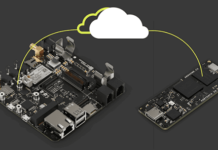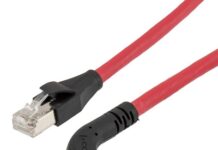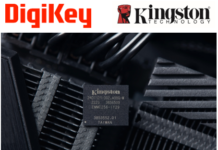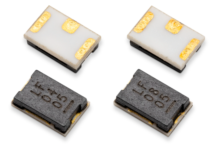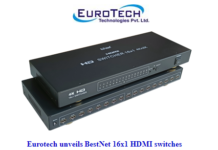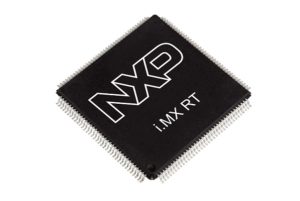
ARM TECHCON 2017 — NXP Semiconductors N.V. presents the i.MX RT series, a crossover solution that bridges the gap between high performance and integration while minimizing costs. As the need for smarter and more ‘aware’ edge computing grows and becomes critical to the development of the Internet of Things (IoT), edge devices are expected to provide the highest compute performance together with reliable security and assured privacy at the lowest cost possible. These essential capabilities with enablers like graphics and display support and seamless connectivity increase system-level costs and extend time-to-market.
NXP tackles this challenge by architecting i.MX RT crossover processors to deliver high performance and functional capabilities of applications processors, but with the ease-of-use and real-time deterministic operation of traditional microcontrollers (MCUs). Ideal applications include audio subsystems, consumer and healthcare, home and building automation, industrial computing, motor control and power conversion.
The new crossover processors offer high levels of integration and rich user experiences (graphics, display, and audio) while reducing system-level costs. The i.MX RT with high-density Static Random-Access Memory (SRAM) and integrated DC-DC delivers unprecedented performance per dollar. The inclusion of fast and secure interfaces for external memories eliminate the need for embedded flash, thus reducing product costs and significantly lowering the cost of flash programming.
“We see embedded designers being forced to make trade-offs between performance and cost in their end products. The i.MX RT’s impressive leap in both areas is indicative of NXP’s innovation and understanding of real market needs,” said Markus Levy, President of EEMBC. “This kind of unique approach will revolutionize embedded designs across ‘thousands’ of IoT applications.”
Performance and Power Comparisons
The new i.MX RT1050 is the highest performing ARM Cortex-M7 based device with real-time operation and an applications processor-level of functionality. At 600 MHz, it is 50 percent faster than any other Cortex-M7 product and more than two times faster than existing Cortex-M4 products. By combining this high performance with a Cortex-M7 core, an interrupt latency as low as 20 nanoseconds – the lowest among all ARM Cortex-based products in the world has been achieved. Furthermore, by integrating 512KB of Tightly Coupled Memory (TCM) SRAM, a very high effective core performance is maintained for real-time IoT applications.
An integrated DC-DC converter not only eliminates a need for an external PMIC, but also enables an active power efficiency (CoreMark per mW) that is 2-4x better than competing MCU solutions. At 110 μA/MHz (full operation) the i.MX RT1050 is 2-3x better than the competing Cortex-M7 based MCUs.
Integration and Ease of Use
The i.MX RT1050 enables advanced GUIs, enhanced HMIs and greater design flexibility with multiple external memory interface options. High security embedded designs are made possible by high-efficiency encryption engine for AES-128, High Assurance Boot (HAB) and On-the-fly QSPI Flash Decryption.
MCU customers can leverage their current toolchain including MCUXpresso Software and Tools, IAR Systems and ARM Keil MDK saving time and tool reuse. Rapid developing and easy prototyping are possible with open source real-time operating systems including FreeRTOS, ARM Mbed OS, Zephyr OS, and the global ARM ecosystem that provides software libraries, online tools, and support. Using the low-cost evaluation kit (EVK) compatible with Arduino hardware shields enables faster development. And, NXP’s ready-to-play USB Type-C shield board works with i.MX RT through the Arduino header to further ease development.
“RT blows the lid off anything else on the market. It enables customers to move up to application-level performance while staying with their current tool-chain and ecosystems. It’s also much easier on the supply chain to program low pin count serial flash than a wide variety of larger package MCUs,” said Geoff Lees, senior vice president and general manager of microcontrollers at NXP. “Stay tuned, the race to GHz Cortex-M is on.”
Pricing and Availability
Best of all, the leading performance and power efficiency of the i.MX RT series comes at an affordable price. And, BOM cost reductions are achieved with 2-4 layer PCB design and savings can be realized by programming external flash as compared to programming flash on-chip on a large MCU.
Two families have been introduced for maximum flexibility with features, pricing, and packaging.
- i.MX RT1050 is available now starting at $2.98 USD for 10K quantity
- i.MX RT1020 will be available Q2 2018 and priced at $2.18 USD for 10K quantity



